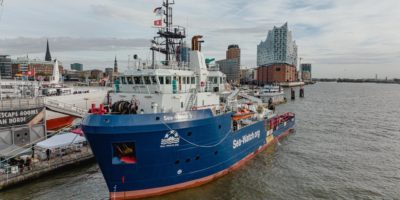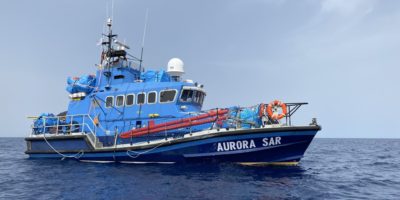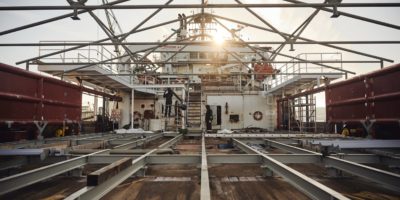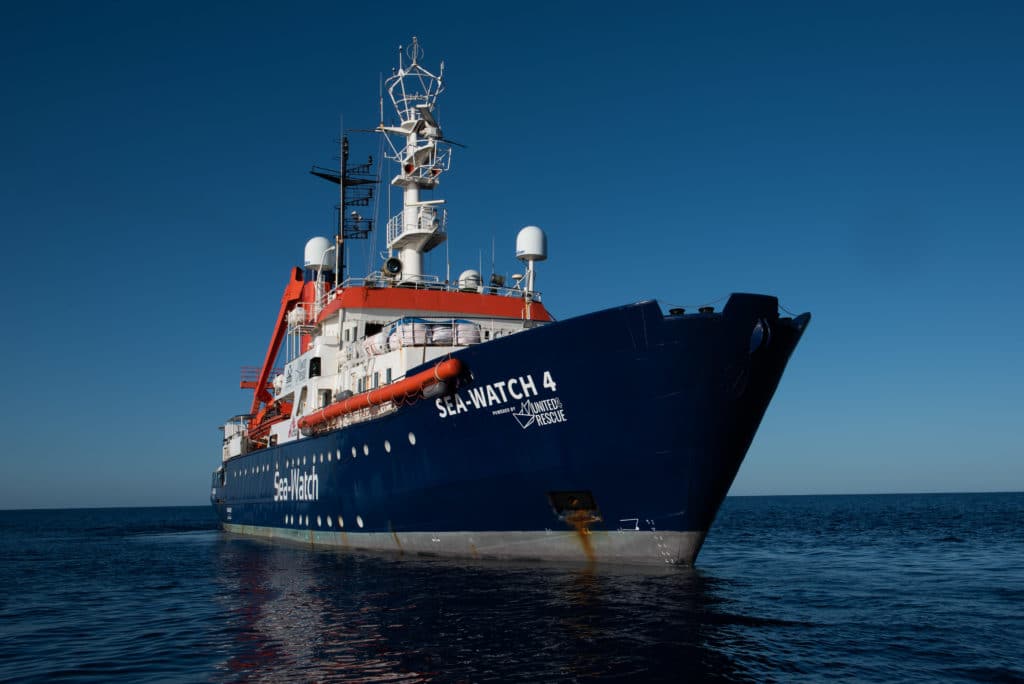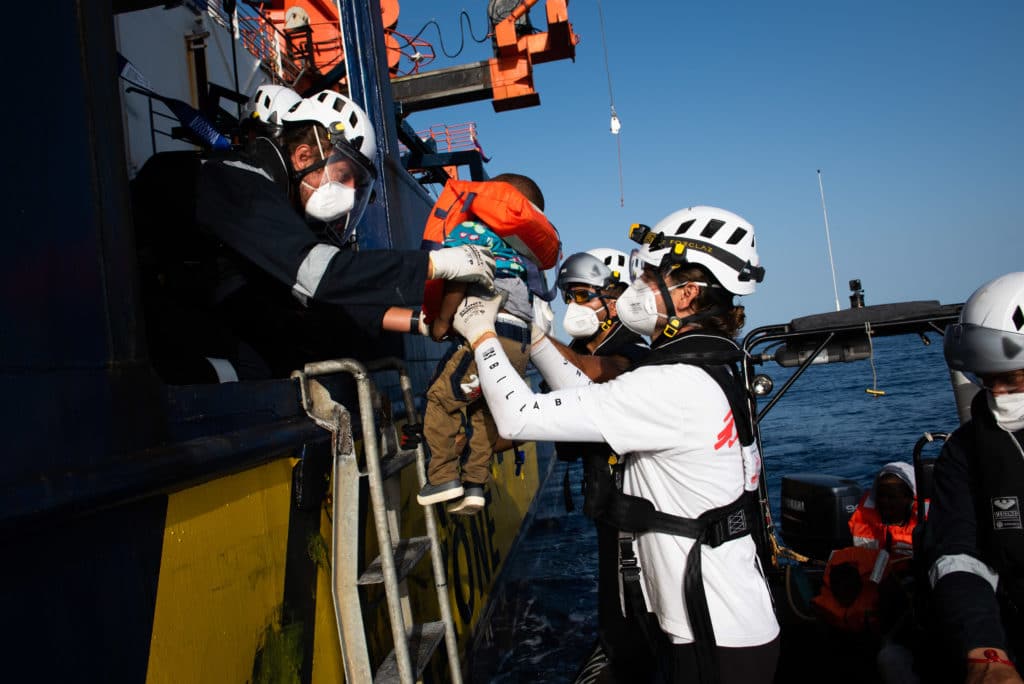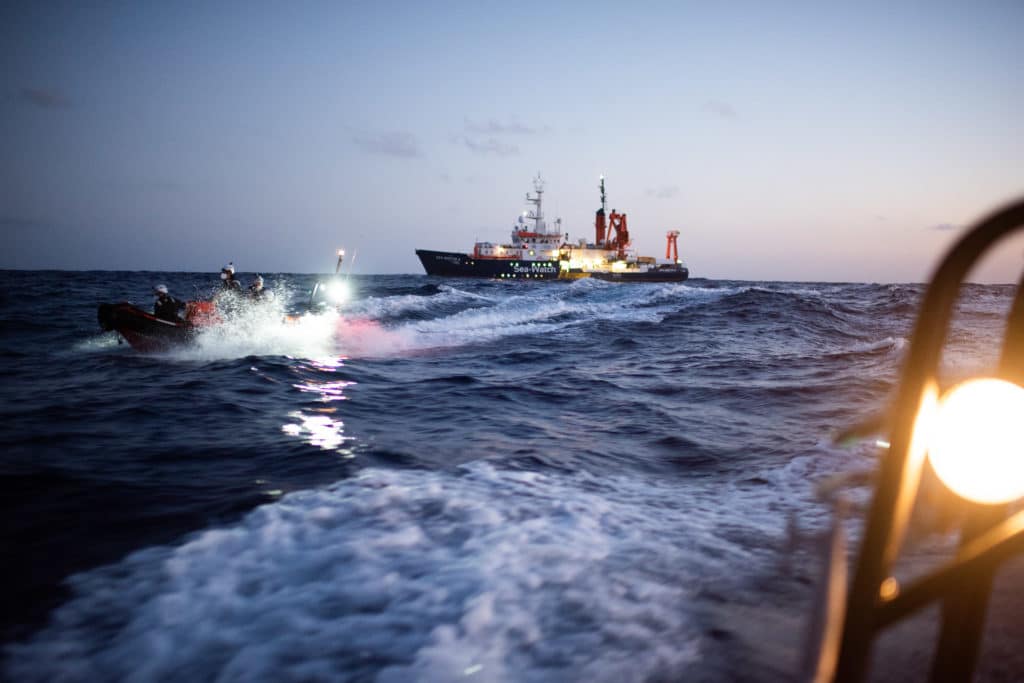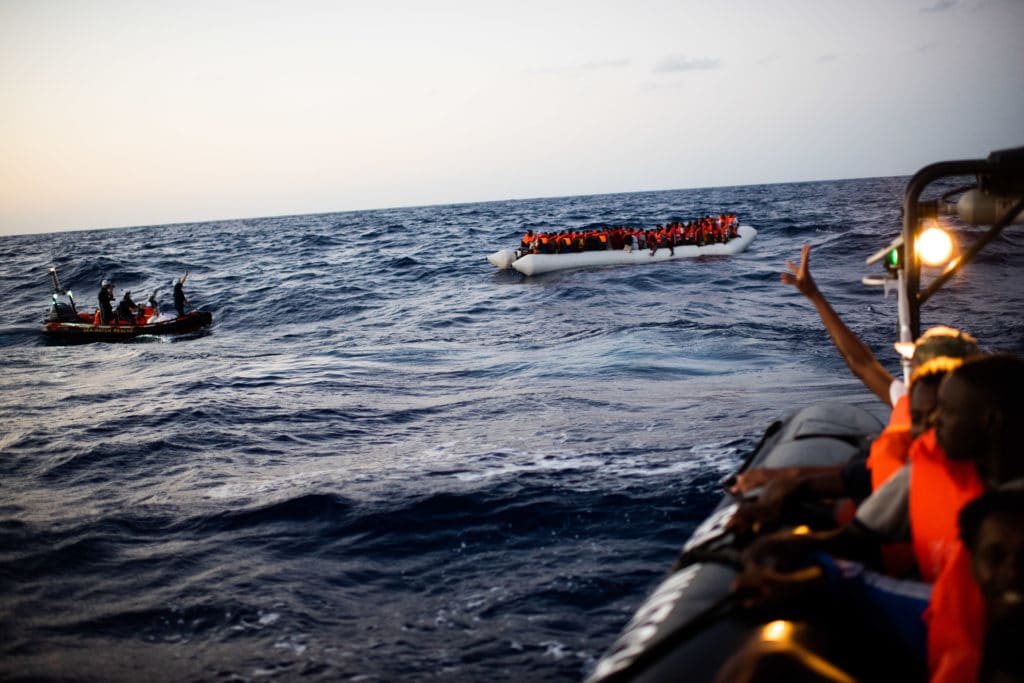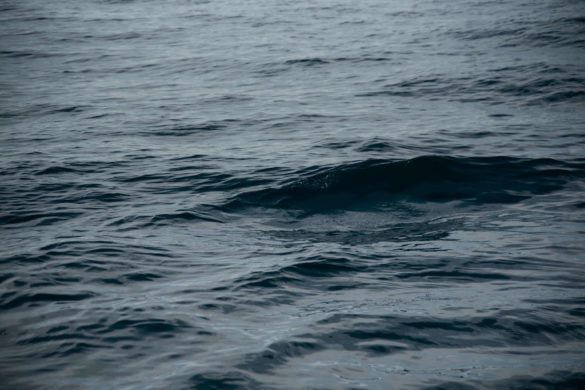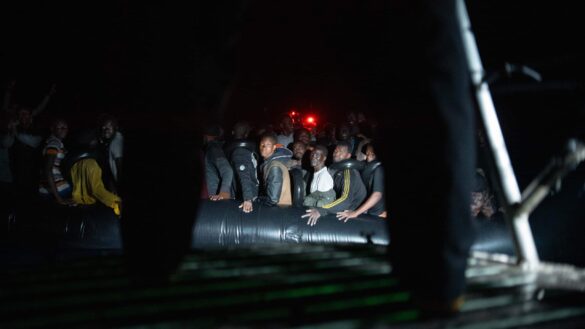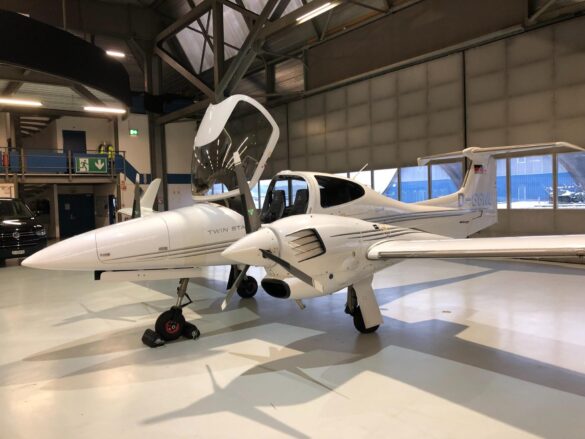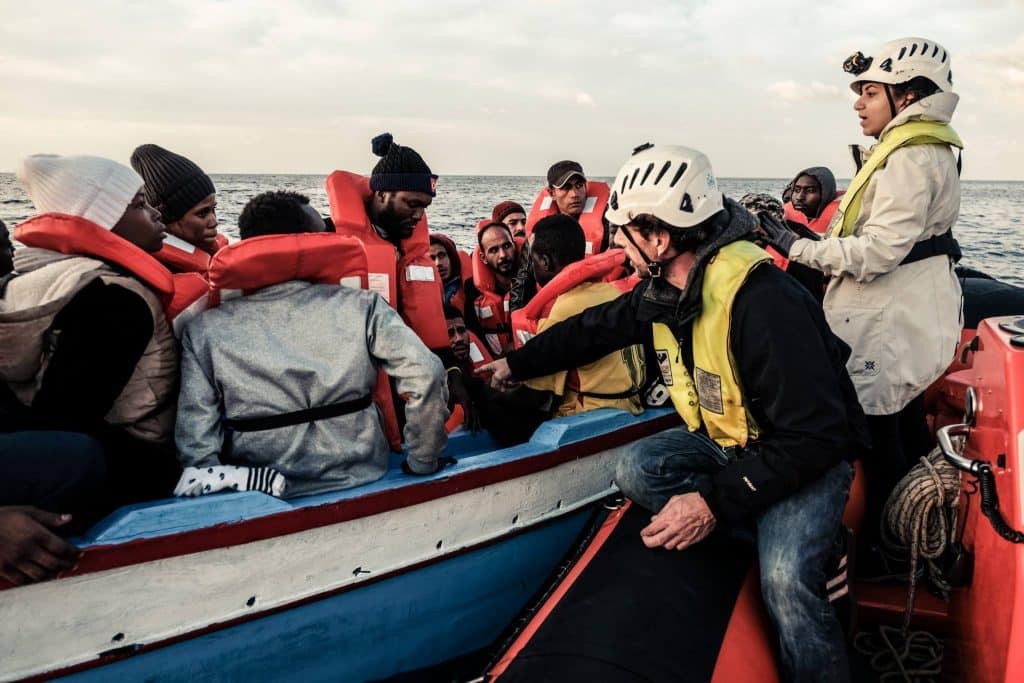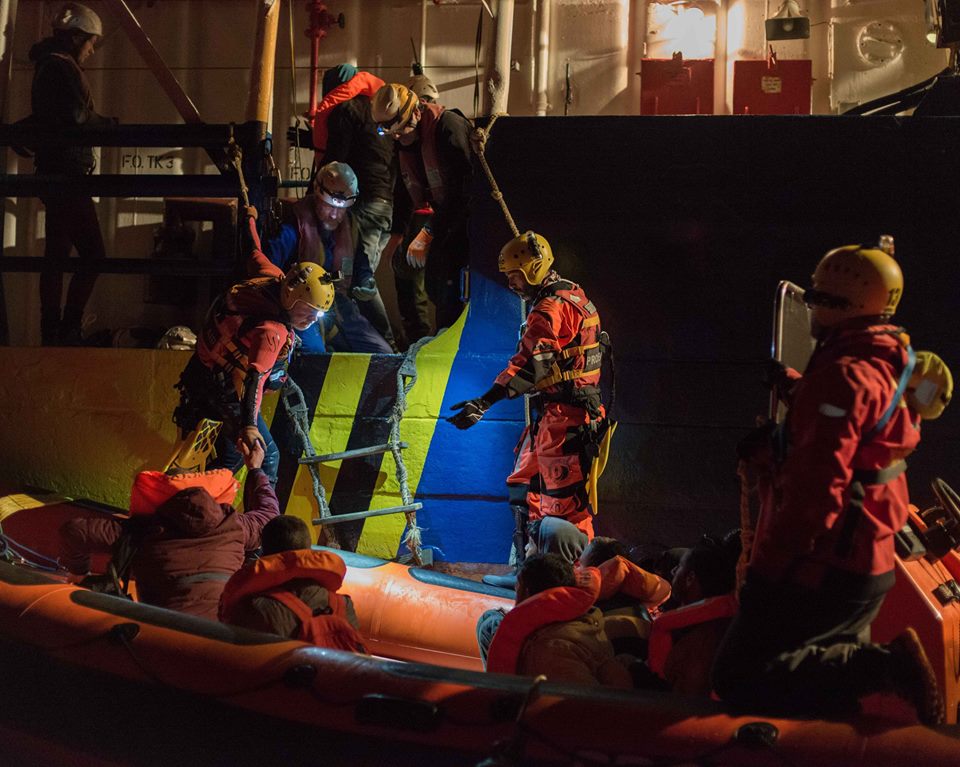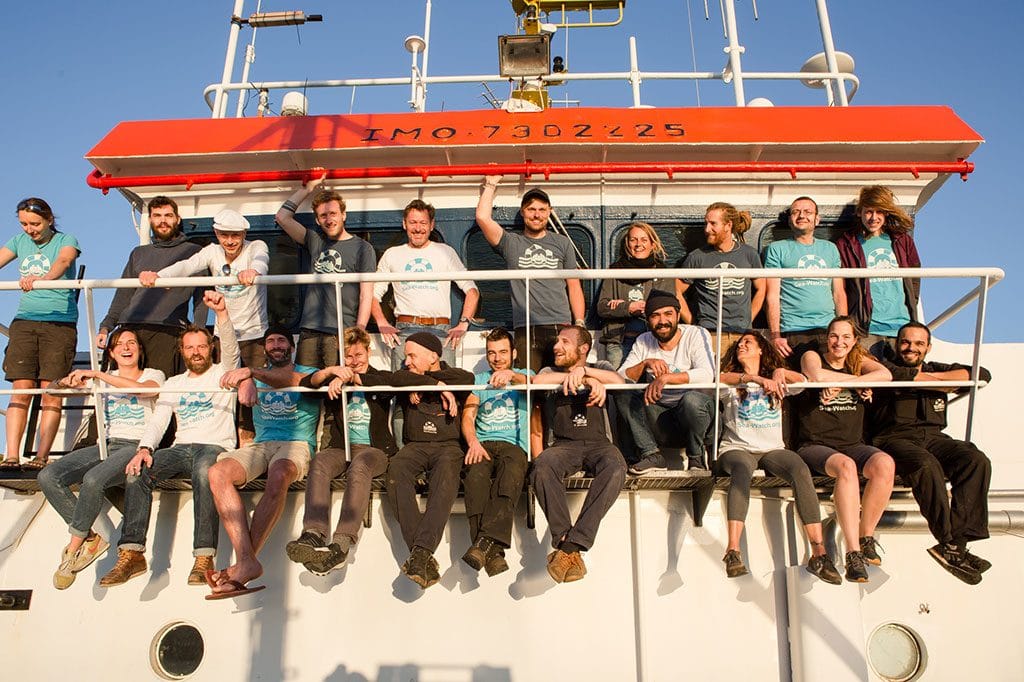Rescue of refugees
As soon as a boat is found, we provide help. First we put our speedboats on the water and drive to the escape boats. The inflatables and wooden boats are too unstable to be approached directly by the large ship. In addition, any panic must be prevented. A well-rehearsed rescue system ensures maximum safety for people in distress at sea and for our crew. When we reach the getaway boat, we first use life jackets and mountains to protect people from medical emergencies, infants and pregnant women and bring them to Sea-Watch 3, where a translator explains the procedure to the people and calms the situation throughout.
When people are already in the water, large rescue hoses are lowered into the water, where people can hold on. In addition, lifebelts and vests are thrown into the water to give people a short stop. Our two speedboats then rescue all persons already in the water and secure the escape boat at the same time, so that no more people fall into the water.
On board the Sea-Watch 4 the medical crew takes care of the guests: First, the mostly highly dehydrated saved drinking water is distributed. After that, the view is held specifically after emergencies. Untreated wounds and fractures (often caused by torture from Libya), dehydration and severe burns (caused by petrol and salt water) must be treated most frequently by our doctors and emergency paramedics.
In consultation with the MRCC Rome, we pass the people we rescue on to partner organisations or the Italian coast watch for them to be brought to a safe harbour. Only when the MRCC Rome explicitly requests us to do so will we take the voyage to a safe harbour.

